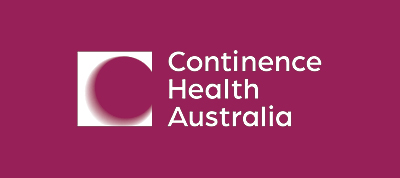Aboriginal and Torres Strait Islander women’s experiences of living with urinary incontinence
Prabha Lakhan A * , Audrey Burgin A , Kalisha Soe A , Annie Fonda A and Noel Hayman A BA
B
Abstract
Urinary incontinence (UI) refers to the intermittent or continuous involuntary loss of urine, with an estimated prevalence of 31% among Australian women in 2023, and minimal data on the prevalence of UI among Aboriginal and Torres Strait Islander women. There are many social, economic, physical, and psychological consequences of UI for the individual, society and healthcare services. This research aimed to describe Aboriginal and Torres Strait Islander women’s experiences of living with UI, and with healthcare services.
Aboriginal and Torres Strait Islander women, attending an urban Indigenous primary healthcare service, participated in semi-structured interviews. They described their understanding and experiences of living with and managing UI, its impacts on their everyday living, and with healthcare services including treatments.
Twenty-three Aboriginal and Torres Strait Islander women, aged ≥40 years, participated in the interviews. Five themes identified from synthesis of information from all interviews included describing UI; managing incontinence; treatments for incontinence; challenges of living with incontinence; and strengthening the delivery of health services. Participants understanding of UI reflected their individual experiences. Strategies used for managing UI included acceptance, containment aids and controlling frequency of UI. Participants identified many negative consequences of UI on daily living, and strategies to enhance health care services.
The research findings have identified the need for a comprehensive primary health services model of care to increase awareness, dispel myths, identify women at risk of, or experiencing UI, and provision of appropriate individualised conservative and specialist treatments.
Keywords: Aboriginal, experiences, incontinence, primary healthcare, service provision, Torres Strait Islander, urinary, women.
References
1 Denisenko AA, Clark CB, D’Amico M, Murphy AM. Evaluation and management of female urinary incontinence. Can J Urol 2021; 28(S2): 27-32.
| Google Scholar |
2 International Continence Society. ICS Standards 2024; 2024. Available at https://www.ics.org/Publications/ICS%20Standards%202024.pdf [accessed 15 August 2024]
3 Milsom I, Altman D, Cartwright R, Lapitan M, Nelson R, Sjostrom S, et al. Epidemiology of urinary incontinence (UI) and other lower urinary tract symptoms (LUTS), pelvic organ prolapse (POP) and anal (AI) incontinence. In: Cardozo L, Rovner E, Wagg A, Wein A, Abrams P, editors. Incontinence. 7th edn. Bristol UK: ICI-ICS International Continence Society; 2023. pp. 26–44. Available at https://www.ics.org/ici [accessed 25 September 2024]
4 Trowbridge ER, Hoover EF. Evaluation and treatment of urinary incontinence in women. Gastroenterol Clin North Am. 2022; 51(1): 157-75.
| Crossref | Google Scholar |
5 Australian Institute of Health and Welfare. Incontinence in Australia. Cat.no. DIS 61. Canberra: AIHW; 2013. Available at https://www.aihw.gov.au/getmedia/0fc2a011-d290-42ef-a610-85073ef2909e/15387.pdf?v=20230605172320&inline=true [accessed 27 September 2024]
6 Botlero R, Davis SR, Urquhart DM, Shortreed S, Bell RJ. Age-specific prevalence of, and factors associated with, different types of urinary incontinence in community-dwelling Australian women assessed with a validated questionnaire. Maturitas 2009; 62(2): 134-9.
| Crossref | Google Scholar |
7 Chiarelli P, Brown WJ. Leaking urine in Australian women: prevalence and associated conditions. Women Health 1999; 29(1): 1-13.
| Crossref | Google Scholar |
8 Concepcion K, Cheng Y, McGeechan K, Robertson S, Stewart M, Bateson D, et al. Prevalence and associated factors of urinary leakage among women participating in the 45 and Up Study. Neurourol Urodyn 2018; 37(8): 2782-91.
| Crossref | Google Scholar |
9 Deloitte Australia. Economic cost of incontinence in Australia June 2024; 2024. Available at https://drive.google.com/file/d/1nYrPDcGF8S4qfiySGofuFcSyAShWs1Is/view [accessed 18 September 2024]
10 Mishra GD, Barker MS, Herber-Gast G-C, Hillard T. Depression and the incidence of urinary incontinence symptoms among young women: results from a prospective cohort study. Maturitas 2015; 81(4): 456-61.
| Crossref | Google Scholar |
11 O’Shea SD, Pope R, Freire K, Orr R. Prevalence of lower urinary tract symptoms in a cohort of Australian servicewomen and female veterans. Int Urogynecol J 2023; 34(4): 885-96.
| Crossref | Google Scholar |
12 Smith K, Sutherland A, Hyde Z, Crawford R, Dwyer A, Malay R, et al. Assessment, incidence and factors associated with urinary incontinence in older Aboriginal Australians. Intern Med J 2019; 49(9): 1111-8.
| Crossref | Google Scholar |
13 Zeleke BM, Bell RJ, Billah B, Davis SR. Symptomatic pelvic floor disorders in community-dwelling older Australian women. Maturitas 2016; 85: 34-41.
| Crossref | Google Scholar |
14 Mendes A, Hoga L, Gonçalves B, Silva P, Pereira P. Adult women’s experiences of urinary incontinence: a systematic review of qualitative evidence. JBI Database Syst Rev Implement Rep 2017; 15(5): 1350-408.
| Crossref | Google Scholar |
15 Benness C, Manning J. Urinary dysfunction in Australian Aboriginal women [Abstract 0077]. Int Urogynecol J 1997; 8: S65.
| Google Scholar |
16 Toye F, Barker KL. A meta-ethnography to understand the experience of living with urinary incontinence: ‘is it just part and parcel of life?’. BMC Urol 2020; 20(1): 1-25.
| Crossref | Google Scholar |
17 Gurol-Urganci I, Geary RS, Mamza JB, Iwagami M, El-Hamamsy D, Duckett J, et al. Determinants of referral of women with urinary incontinence to specialist services: a national cohort study using primary care data from the UK. BMC Fam Pract 2020; 21(1): 211-8.
| Crossref | Google Scholar |
18 Roberts S, Howard Z, Weir KA, Nucifora J, Baker N, Smith L, et al. Patient perceptions of a group-based lifestyle intervention for overweight women with urinary incontinence: a qualitative descriptive study. Healthcare 2021; 9(3): 265.
| Crossref | Google Scholar |
19 Todhunter-Brown A, Hazelton C, Campbell P, Elders A, Hagen S, McClurg D. Conservative interventions for treating urinary incontinence in women: an Overview of Cochrane systematic reviews. Cochrane Database Syst Rev 2022; 9(9): Cd012337.
| Crossref | Google Scholar |
20 Milroy T, Jacobs S, Frayne J. Impact of pelvic floor dysfunction in Aboriginal and Torres Strait Islander women attending an urban Aboriginal medical service. Aust N Z J Obstet Gynaecol 2022; 62(5): 748-54.
| Crossref | Google Scholar |
21 Bonner A, Boyle J. Are women’s needs being met by specialist health services managing urinary incontinence in the remote Top End NT? Aust N Z J Obstet Gynaecol 2017; 57(3): 351-7.
| Crossref | Google Scholar |
22 Bond C, Foley W, Askew D. “It puts a human face on the researched”– a qualitative evaluation of an Indigenous health research governance model. Aust N Z J Public Health 2016; 40(Suppl 1): S89-95.
| Crossref | Google Scholar |
23 Lakhan P, Soe K, Burgin A, Fonda A, Hayman N. Aboriginal and Torres Strait Islander women’s appraisal of continence information brochures. A N Z Cont J 2025; 31: CJ24040.
| Crossref | Google Scholar |
24 Tong A, Sainsbury P, Craig J. Consolidated criteria for reporting qualitative research (COREQ): a 32-item checklist for interviews and focus groups. Int J Qual Health Care 2007; 19(6): 349-57.
| Crossref | Google Scholar |
25 St John W, James H, McKenzie S. “Oh, that’s a bit of a nuisance”: community-dwelling clients’ perspectives of urinary continence health service provision. J Wound Ostomy Continence Nurs 2002; 29(6): 312-9.
| Crossref | Google Scholar |
26 van Vuuren AJ, van Rensburg JA, Jacobs L, Hanekom S. Exploring literature on knowledge, attitudes, beliefs and practices towards urinary incontinence management: a scoping review. Int Urogynecol J 2021; 32(3): 485-99.
| Crossref | Google Scholar |
27 Avery J, Gill T, Taylor A, Stocks N. Urinary incontinence: severity, perceptions and population prevalence in Australian women. A N Z Cont J 2014; 20(1): 7-13.
| Google Scholar |
28 Jarbøl DE, Haastrup PF, Rasmussen S, Søndergaaard J, Balasubramaniam K. Women’s barriers for contacting their general practitioner when bothered by urinary incontinence: a population-based cross-sectional study. BMC Urol 2021; 21(1): 99-108.
| Crossref | Google Scholar |
29 Mason L, Glenn S, Walton I, Hughes C. Women’s reluctance to seek help for stress incontinence during pregnancy and following childbirth. Midwifery 2001; 17(3): 212-21.
| Crossref | Google Scholar |
30 Peake S, Manderson L. The constraints of a normal life: the management of urinary incontinence by middle aged women. Women Health 2003; 37(3): 37-51.
| Crossref | Google Scholar |
31 Shaw C, Williams KS, Assassa RP. Patients’ views of a new nurse-led continence service. J Clin Nurs 2000; 9(4): 574-84.
| Crossref | Google Scholar |
32 Firet L, de Bree C, Verhoeks CM, Teunissen DAM, Lagro-Janssen ALM. Mixed feelings: general practitioners’ attitudes towards eHealth for stress urinary incontinence - a qualitative study. BMC Fam Pract 2019; 20(1): 21.
| Crossref | Google Scholar |
33 Schreuder MC, van Merode NAM, Oldenhof AP, Groenhof F, Kortekaas MF, Maagdenberg H, et al. Primary care diagnostic and treatment pathways in Dutch women with urinary incontinence. Scand J Prim Health Care 2022; 40(1): 87-94.
| Crossref | Google Scholar |
34 Shaw C, Atwell C, Wood F, Brittain K, Williams K. A qualitative study of the assessment and treatment of incontinence in primary care. Fam Pract 2007; 24(5): 461-7.
| Crossref | Google Scholar |
35 Sutherland A, Billimoria J. Aboriginal and Torres Strait Islander continence training in rural and remote Australia. 11th National Rural health Conference; held at Perth Convention Centre; 13–16 March 2011; 2011. Available at http://ruralhealth.org.au/11nrhc/papers/11th%20NRHC%20Sutherland_Ailsa_D7.pdf [accessed 25 November 2024]
36 Royal Australian College of General Practitioners. Managing incontinence in general practice. Clinical practice guidelines; 2002. Available at https://www.continence.org.au/sites/default/files/2020-05/Academic_Managing_incontinence_in_general_practice_-_clinical_practice_guidelines.pdf [accessed 25 November 2024]
37 Continence Foundation of Australia. Resources for Aborigional and Torres Strait Islander persons. Available at https://www.continence.org.au/get-help/resources?field_stres_professionals_only_value=All&field_stres_general_public_value=1&search=&field_stres_topic_value%5BAboriginal+and+Torres+Strait+Islander%5D=Aboriginal+and+Torres+Strait+Islander&items_per_page=6&field_stres_languages_value=All&v=9541 [accessed 26 November 2024]


